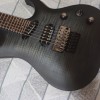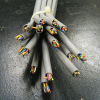tell me your experience using zfs/btrfs
cross-posted from: programming.dev/post/9319044
Hey,
I am planning to implement authenticated boot inspired from Pid Eins’ blog. I’ll be using pam mount for /home/user. I need to check integrity of all partitions.
I have been using luks+ext4 till now. I am hesistant hesitant to switch to zfs/btrfs, afraid I might fuck up. A while back I accidently purged ‘/’ trying out timeshift which was my fault.
Should I use zfs/btrfs for /home/user? As for root, I’m considering luks+(zfs/btrfs) to be restorable to blank state.







Add comment